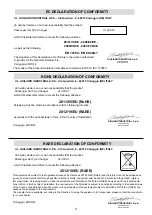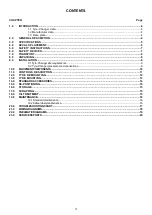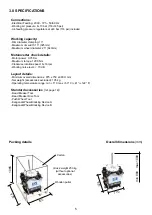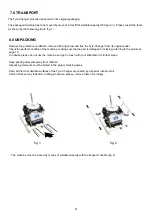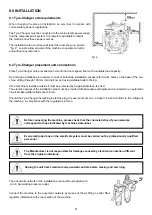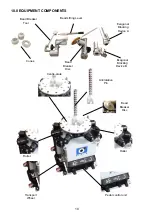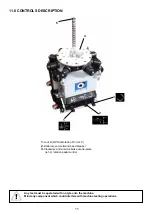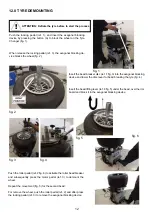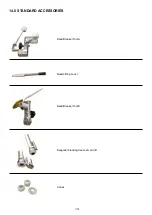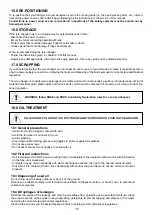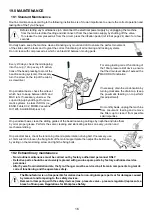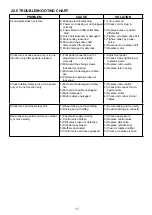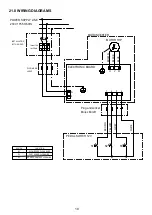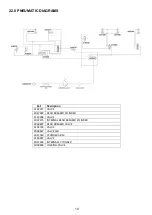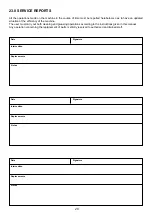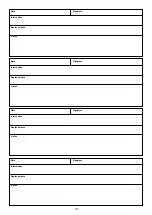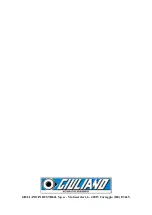
15
15.0 RE-POSITIONING
16.0 STORAGE
17.0 SCRAPPING
WARNING: follow RAEE and ROHS Conformity Declaration rules for a correct disposal.
18.1 General precautions
- Avoid direct and prolonged contact with skin.
- Avoid the formation of oil mists in the air.
- Avoid splashing.
- Wear appropriate clothing, gloves and goggles to protect against oil splashes.
- Do not use greasy rags.
- Do not eat or smoke if your hands are soiled with oil.
18.2 First Aid instructions
- If oil is swallowed, do NOT induce vomiting but go immediately to the nearest medical centre with information
on the type of oil swallowed.
- If oil gets in eyes, rinse abundantly with water until irritation ceases, then go to the nearest medical centre.
- If oil comes into contact with skin, rinse abundantly with neutral soap and water. do not use solvents or irritant
products.
18.3 Disposing of used oil
Do not throw used oil away outdoors or pour it on the ground.
Drain into a suitable container and forward to specialised oil disposal centres, or hand it over to authorised
collection companies.
18.4 Oil spillages or leakages
Eliminate the cause of the leakage and stop the oil spillage from spreading using absorbent material. Clean
the area where the oil has spilled using degreasing detergents to prevent slipping and dispose of the waste
according to current state and Federal regulations.
Clean up the oil and send to special disposal centres according to current National regulations.
18.0 OIL TREATMENT
OIL IS HIGHLY POLLUTANT! DO NOT THROW AWAY OUTDOORS OR POUR ON THE GROUND.
To re-position the Tyre-Changer in a new workplace: secure the moving parts (i.e. the bead pressing arms, etc.) discon
-
nect all the power sources and install it again following all the instruction per chapter 9.0 of this manual.
Connections to power sources and connection & inspections of the safety systems must be carried out by
trained personnel.
If the tyre changer has to be stored away for extended periods of time:
- Disconnect the power sources.
- Empty the tanks containing operational fluids.
- Protect parts that could be damaged if dust should settle on them.
- Grease parts that could damage if they should dry up.
When re-commissioning the tyre changer:
- Follow the instructions given in chapter 9.0 of this manual.
- Replace any damaged parts, referring to the spare parts list - this to be carried out by skilled personnel.
If you should decide that the tyre changer can no longer be used, you are recommended to make it unusable by remo
-
ving the power supply connections, emptying the tanks and disposing of the fluids pursuant to current state and National
regulation.
The tyre changer is considered as heterogeneous waste and must consequently be split-up into parts made of similar
material (electrical parts, plastic parts and ferrous parts), which must be disposed of properly, according to current Na-
tional regulation.


